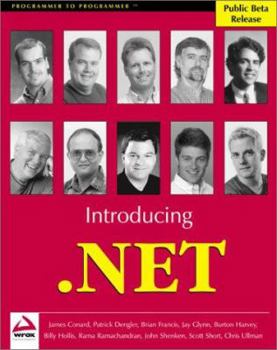Introducing .Net
Introducing .NET provides a guide to the emerging set of technologies and standards that will be a part of the Microsoft .NET platform. Ideal for any programmer (or IT manager) who works with Windows,... This description may be from another edition of this product.
Format:Paperback
Language:English
ISBN:1861004893
ISBN13:9781861004895
Release Date:January 2001
Publisher:Wrox Press
Length:448 Pages
Weight:1.65 lbs.
Dimensions:1.0" x 7.3" x 9.1"













